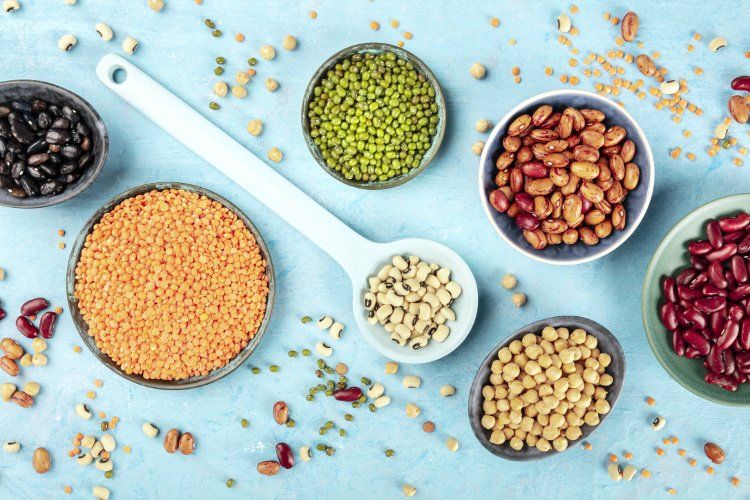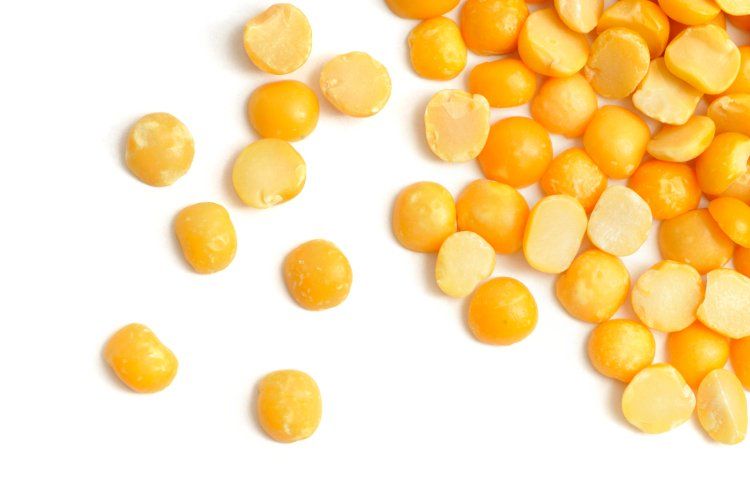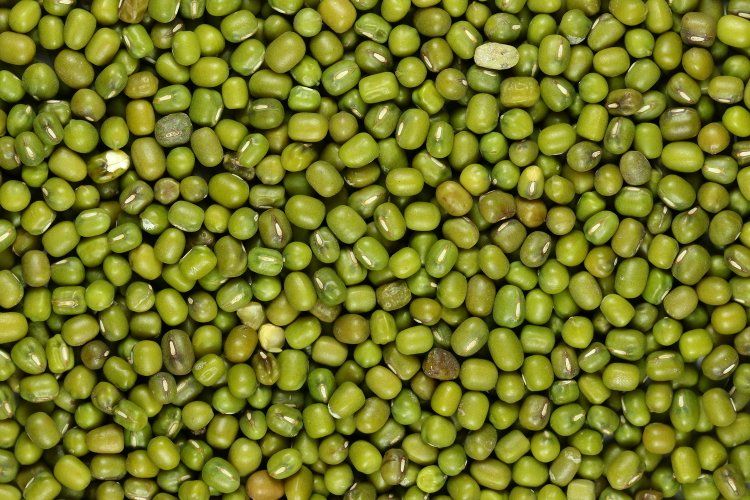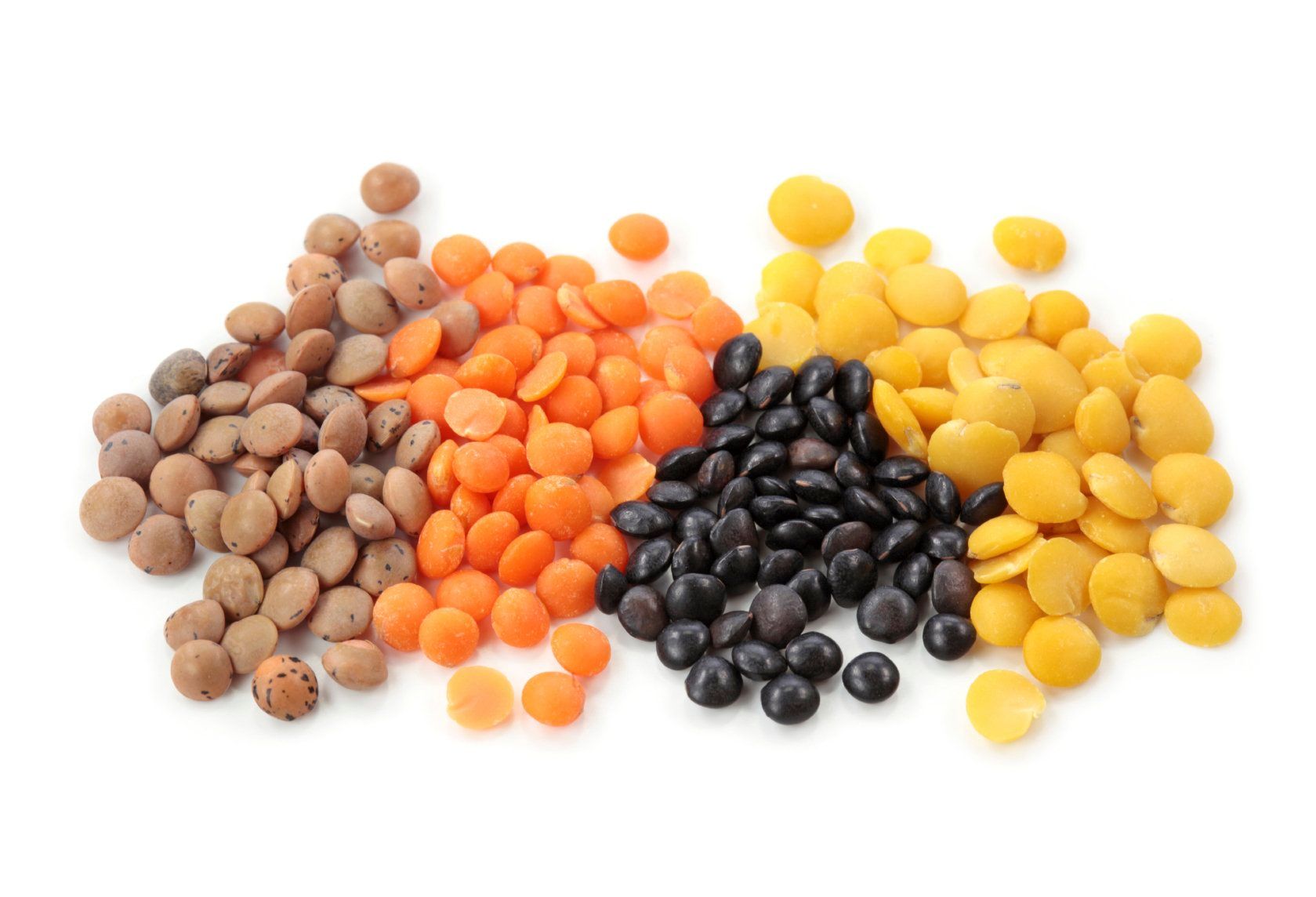Plant protein: No plateau in sight?
It’s the question on everyone’s minds: Will demand for plant protein plateau anytime soon?

It’s the question on everyone’s minds: Will demand for plant protein plateau anytime soon? With Mordor Intelligence just one of many predicting impressive ongoing growth-in this case, 7% compound annual growth for the category through 2024, elevating its value to $9.5 billion-and with “Big Meat” powerhouses like Tyson and Maple Leaf Foods investing in or acquiring plant-based protein producers outright, the answer is a solid “Not even close.”
Kristen Germana, senior marketing manager, nutrition, Ingredion Inc. (Westchester, IL), feels the way many do: that far from being a flash in the pan, plant proteins represent the wave of the future. “The statistic that always gets me,” she says, “is that ‘by 2054 plant protein is expected to be one-third of all protein,’ according to the Plant-Based Foods Association. There are some who believe this shift toward more plant-based protein will occur even sooner.”
Whenever it occurs, consumers already demand more from plant protein-and that leaves producers little choice but to deliver. “Food companies and ingredient suppliers have been urged to up their game so that consumers don’t need to compromise taste, mouthfeel, or satisfaction for the benefits that plant proteins bring,” Germana says. “The better that eating experience, the more plant-based adopters we’ll have. It’s an amazing movement to be a part of.”
Alternative Goes Mainstream
It’s also an amazing movement that owes its start to vegans and vegetarians, whose “interest in personal health, sustainability, and animal rights caught on with more consumers, leading to movements like flexitarianism and reducetarianism,” Germana says.
The upshot: Plant proteins-and plant-based diets in general-are more mainstream than anyone would have predicted even a decade ago. Research from IRI shows that 69% of consumers try to eat meatless meals at least once per week, with 28% claiming to have reduced or eliminated meat consumption overall. “Those are big numbers that drive the shift from animal-based to plant-based proteins,” notes Chris DuBois, senior vice president at the Chicago-based market-research firm.
Matthew Jacobs, global product line leader, plant proteins, Cargill (Minneapolis), agrees. Plant proteins’ primacy “is evident on store shelves and reaffirmed in consumer research,” he says. Better to understand why, Cargill conducted a survey of more than 1,900 U.S. grocery shoppers and found that nearly half agree to feeling better about eating plant protein. “Nearly all respondents were open to buying products with plant-based proteins, especially in nutritional beverages, snacks, and dairy,” Jacobs says.
Driving the Train
This doesn’t surprise Cody Flynn, product manager, Prinova USA (Hanover Park, IL). “When it comes to plant proteins,” he says, “many check all the boxes consumers want. They can be allergen-friendly, environmentally sustainable, clean label, non-GMO, organic-the list goes on.”
For his part, DuBois believes that “underlying the big push toward plant proteins has been a generational shift.” Millennials especially grew up with plant proteins in the mainstream-exposure that continued as they went off to college, he says. “So they’re used to them. And they’re simply more acclimated to trying new things.”
Ramon Luna, marketing coordinator, Ecuadorian Rainforest (Clifton, NJ), cites sustainability and diet as key reasons for plant protein’s popularity. “Both may seem independent but are closely related,” he explains. “A swelling group is starting to realize the issues around animal protein, noting its detrimental effects on the environment. This, in turn, is causing some consumer groups to change their diets to have a smaller footprint on the planet. So more consumers are looking for alternative protein sources-namely, plants.”
And they’re looking for “clean” labels, too, which is another place where plant proteins excel. Notes Michelle Gillespie, NTP, natural insights analyst, SPINS (Chicago), shelf-stable wellness bars and gels, as well as protein-supplements and meal-replacements, are both sectors “where plant-based protein use is prevalent.” Not coincidentally, they’re also sectors where sales of organic and non-GMO options are outpacing those of their conventional plant-based counterparts, she says.
Scaling Up
Of course, such sales wouldn’t be possible were it not for ingredient innovations that allow plant proteins to colonize so many categories.
“As interest in plant proteins has exploded, so has product innovation,” says Jacobs. “New product launches have grown significantly, and with them we’ve seen dramatic improvements in flavor and texture.”
Another step in the category’s transition from “flash-in-the-pan to core staple,” Flynn says, has been the scaling up of manufacturing and raw-material supply. Consider pea protein, which he says “has seen relatively consistent harvests over the past few years, coupled with constant increases in manufacturing capacity to maintain supply and demand.” Production is already at scale, and pea protein has “a friendly price point and sourcing story consumers approve of.”
Indeed, Gillespie notes that over the 52 weeks ending May 19, 2019, SPINS tracked 37.1% growth for pea protein in the protein supplements and meal replacements segment, outpacing category growth of 4.0% overall. And in the shelf-stable wellness bars segment, pea protein grew an impressive 147% over the same period.
Bumps in the Road
None of this is to say it’s all smooth sailing for plant proteins.
From a technical standpoint, Shaheen Majeed, president worldwide, Sabinsa (East Windsor, NJ), cautions that “although plants are a readily available raw material for protein extraction, they have the disadvantage of less protein yield.” That’s partly because fat in plant seeds suppresses protein extraction. Further, the rigid cellulose wall protecting plant cells “has to be broken down before the protein can be obtained, and this requires energy and time,” Majeed adds. What’s more, the whole process must proceed under cold conditions to dampen the activity of protease enzymes that can digest the very plant proteins processors are trying to extract.
Another hurdle to plant-protein production is lot consistency. “While all strive to create a better-tasting product,” Flynn says, “they’re also fine-tuning process flow to deliver the same product color, taste, particle size, and bulk density. This is an important piece not only at the manufacturing level but at the crop level, too. Crop science plays a big part in delivering a better, more consistent product.”
The there’s cost. “New product development comes at a price,” says Alison Pomaville, ingredient application scientist, BI Nutraceuticals (Rancho Dominguez, CA). “A new supply chain, perfecting production efficiencies, and lack of economies of scale all increase product cost.” It can take as long as two to three years following launch for a protein product to hit its optimal price, and that matters when consumers rank price second only to taste among factors they consider when purchasing plant-protein products.
And taste remains an inescapable concern. Jacobs cautions that many consumers have “established perceptions about plant-based proteins,” including that their taste or texture is inferior, that products are hard to find, and that they’re less satisfying than their animal-based equivalents. “We know consumers will try products made with plant proteins,” he insists, “but they must deliver on expectations for taste, texture, and satisfaction to earn repeat purchase.”
Fortunately, plant-protein producers keep on cracking this code. “There’s a learning curve with any new ingredient, and new plant proteins are no different,” says Melissa Machen, senior protein technical service specialist at Cargill. “The more we work with them, the more we understand their unique functional, nutritional, and sensory attributes. We then use that knowledge to guide everything from seed variety selection and production practices to how we process and store them, finding ways throughout the supply chain to optimize the protein.”
So consumers would do well to be patient, better to reap the rewards of industry’s efforts. “With so much innovation on the supplier side, product developers have a lot more options for sourcing plant proteins compared to just five years ago,” says Pomaville. “This is great news for consumers who not only want to consume more plant protein, but also want it in a convenient, affordable, and-most importantly-delicious format.”
Click through the following pages to learn about plant-protein innovations that you can look forward to.
Photo © AdobeStock.com/laplateresca

Yes, Peas
Machen considers consumers’ endorsement of pea protein a no-brainer, crediting its emergence as a “significant player in the plant space” to its familiarity factor, not to mention its versatility across applications.
Now, thanks to Cargill’s joint venture with Minneapolis-based pea protein producer Puris, consumers can add improved taste to the list, as the company breeds its peas to yield protein with a clean flavor and smooth texture.
“While most pea proteins have flavor issues, Puris has spent years developing non-GMO yellow pea seed varieties specially selected to minimize the off flavors normally attributed to pulses,” Machen says. “It’s also processed without chemicals to bring out the best flavor possible.”
And while pea protein is one of the more soluble plant proteins available, the line includes a mildly hydrolyzed version for even better solubility, Machen says.
Photo © iStockphoto.com/AlasdairJames

Seeding Innovation
Pomaville says that the most popular plant-protein options in her company’s lineup are pulse and seed based, with pumpkinseed protein a particular standout.
Luna agrees, adding that pumpkinseed protein has plenty of nutritional potential. “Not only is pumpkinseed a good source protein, with a 1-oz serving containing up to 9 g of protein,” he says, “but it’s also known to contain up to 108 IUs of vitamin A, along with trace amounts of calcium, magnesium, and many other vitamins and minerals.”
Looking ahead at even newer sources of seed protein, Pomaville says, “Ingredients like tomato and watermelon seed are great examples of common, consumer-friendly sources with the potential to become huge hits.”
Photo by Dmitry Makeev/Wikimedia Commons/CC-BY-SA-4.0

Bean There, Done That
Bean sprouts-those staples of salads and stir-fries-aren’t the only product to come from mung beans. Increasingly, ingredient suppliers are turning to this lentil as a source of plant protein.
Samantha Ford, business development director, AIDP (City of Industry, CA), says that her company is particularly bullish on the mung bean. “Rice and pea have been plant-protein mainstays,” she notes, “but we’re getting many requests for unique items such as mung bean proteins.”
Ford says it’s a sustainable source of plant-based protein and “one of the more complete plant proteins, too. It aids digestion and is high in antioxidants and minerals, which makes it a great option.”
Photo by Sanjay Acharya/Wikimedia Commons/CC-BY-SA-4.0

Milking the Water Lentil
Parabel (Vero Beach, FL) has made a name for itself by tapping the humble water lentil (Lemnaceae) for its functional plant-based protein. The company’s Lentein line of protein ingredients includes Lentein Complete, which Cecilia Wittbjer, Parabel’s vice president of marketing, says is a go-to ingredient for fortifying ready-to-mix supplements “with a green, complete protein powder.”
A new concentrated form of the plant protein is pending market launch, she adds, and “now we’re expanding our versatility further by working on a soluble white protein solution.”
More big news for water lentils was the company’s recent development of a water-lentil milk. Similar in color to dairy milk, the product delivers the water lentil’s protein and mineral content to consumers while giving product developers formulation functionality with its foaming and frothing capacity.
Photo © iStockphoto.com/zhuda
Protein with a Story

The starchy seeds of the amaranth plant (Amaranthus) have supplied high-quality protein to South Americans since before there even was a South America. And it’s precisely that backstory that Luna thinks gives the pseudocereal potential as a plant-protein source.
“This ingredient has been cultivated in South America for thousands of years and was considered a super grain even during the time of the Aztecs,” he says. “Amaranth has been considered a staple for many South American cultures and stands out as more exotic than quinoa while still having its own standout nutritional profile.” One cup may contain up to 9.4 g of protein along with 5 g of fiber, he says.
Photo © iStockphoto.com/Watcha
Protein Plus

With so much attention directed at plant protein, full stop, it’s easy to forget that all these seed, nut, and bean sources have more going on nutritionally.
“Right now it seems many formulators are focused on delivering as much protein as in animal-derived products,” Luna observes. “But once that hurdle’s been cleared-and it seems like it’ll be soon-plant-protein manufacturers will focus on the other nutrients their products provide. Consumers will begin seeing plant-protein products as much more than a protein source-as a way to maintain balanced health and nutrition.”
Majeed points out all the other phytonutrients found in plants-carotenoids, flavonoids, polyphenols, glucosinolates-“that are continually demonstrating beneficial health properties. Some plant proteins also contain nutrients such as fiber, antioxidants, minerals, and vitamins, making them even healthier choices than animal-based proteins.”
Photo © iStockphoto.com/egal
Prinova acquires Aplinova to further increase its footprint in Latin America
April 7th 2025Prinova has recently announced the acquisition of Brazilian ingredients distributor Aplinova, which is a provider of specialty ingredients for a range of market segments that include food, beverage, supplements, and personal care.










